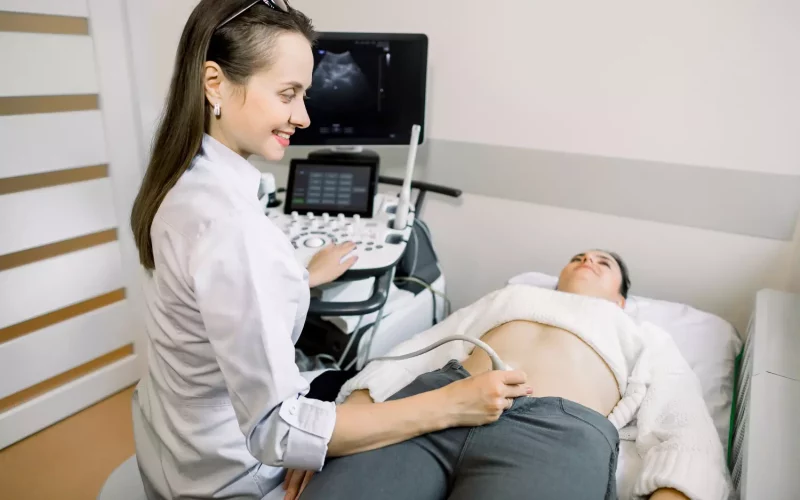In today’s rapidly advancing medical field, radiology stands as a critical discipline, enabling doctors to diagnose and treat various conditions through imaging techniques. As the technology behind medical imaging progresses, the demand for well-educated radiologists continues to grow. This article will explore what radiology is, why radiology education is vital, and what it takes to pursue a career in this essential branch of medicine.
What is Radiology?
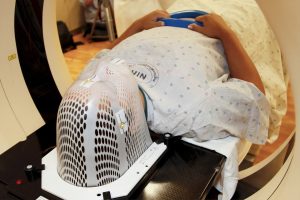
Radiology is the medical specialty that uses medical imaging to diagnose diseases and guide their treatment, within the bodies of humans and other animals. It began with radiography (which is why its name has a root referring to radiation), but today it includes all imaging modalities, including those that use no ionizing electromagnetic radiation (such as ultrasonography and magnetic resonance imaging), as well as others that do, such as computed tomography (CT), fluoroscopy, and nuclear medicine including positron emission tomography (PET). Interventional radiology is the performance of usually minimally invasive medical procedures with the guidance of imaging technologies such as those mentioned above. For example, a CT scan can reveal internal bleeding after an accident, or an MRI can detect brain tumors that are otherwise difficult to diagnose.
Why is Radiology Education Important?
Radiology plays a pivotal role in modern healthcare, and properly trained radiologists are key to ensuring accurate diagnoses. Here are some reasons why radiology education is so important:
Accuracy in Diagnostics:
A misinterpretation of medical images can lead to incorrect diagnoses, affecting patient care. For instance, an early-stage cancerous tumor might be mistaken for benign tissue if a radiologist is not well-trained. Education ensures that radiologists are highly skilled in reading and interpreting these images correctly.
Technological Proficiency:
With advancements in imaging technology, radiologists must stay updated on the latest tools, software, and machines used in the field. For example, the use of 3D mammography helps radiologists detect breast cancer more effectively, and training ensures radiologists know how to utilize this tool optimally.
Collaboration with Healthcare Teams:
Radiologists often work in tandem with other healthcare professionals. For instance, in emergency cases such as suspected stroke, radiologists quickly analyze brain scans (e.g., using CT angiography) to determine whether there’s a blockage or hemorrhage, aiding neurologists in deciding the best course of action.
Improved Patient Outcomes:
Radiology is often the first step in diagnosing a condition. Well-educated radiologists ensure faster and more accurate diagnoses, leading to better treatment outcomes for patients. For example, early detection of osteoporosis through DEXA scans (bone density scans) allows patients to receive treatment before serious fractures occur.
Components of a Radiology Education Program
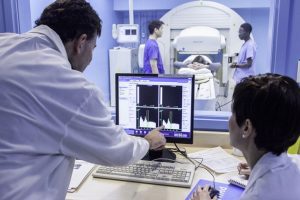
To become a radiologist, one must undergo a comprehensive education and training program that includes:
Pre-medical Studies:
Aspiring radiologists typically begin with an undergraduate degree focusing on the sciences, such as biology or chemistry. For example, many students opt for degrees in biomedical sciences as a foundation.
Medical School:
After undergraduate studies, the next step is attending medical school, where students receive general medical training, including the fundamentals of radiology. During medical school, students might encounter radiology in courses on anatomy and pathology, gaining exposure to basic imaging techniques.
Residency in Radiology:
Following medical school, students must complete a radiology residency program, which can last 4-5 years. During this time, they gain hands-on experience interpreting images and performing diagnostic procedures under the supervision of experienced radiologists. For instance, they might be trained to interpret chest X-rays for conditions like pneumonia or MRI scans for multiple sclerosis.
Specialization:
Some radiologists may choose to specialize further in fields like interventional radiology (which involves using imaging to guide minimally invasive surgical procedures), pediatric radiology (focused on imaging for children), or neuroradiology (focused on the brain and nervous system), requiring additional fellowship training.
Benefits of Pursuing a Career in Radiology
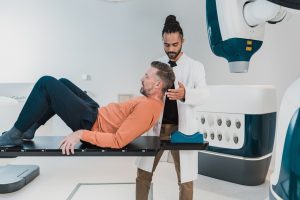
High Demand for Skilled Professionals:
As medical imaging technology continues to evolve, the need for trained radiologists grows. For instance, interventional radiologists who use imaging to guide procedures such as stent placements or tumor ablations are in particularly high demand due to the rise in minimally invasive treatments.
Technological and Intellectual Challenge:
Radiology combines cutting-edge technology with deep medical knowledge, making it a dynamic and intellectually stimulating field. For example, using PET scans to detect the metabolic activity of cancer cells presents a challenging yet rewarding task for radiologists, who must carefully interpret these complex images.
Positive Impact on Patient Care:
By providing crucial diagnostic information, radiologists play a key role in determining the best course of action for patient care. For example, an ultrasound may reveal gallstones in a patient complaining of abdominal pain, leading to quicker treatment decisions and preventing unnecessary exploratory surgeries.
Financially Rewarding:
Radiologists are among the highest-paid medical specialists due to the complexity of their work and the essential nature of their services. Specializations such as interventional radiology or nuclear medicine often offer even higher financial rewards.
The Future of Radiology Education
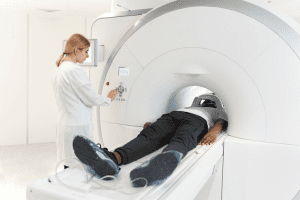
As imaging technologies like AI and machine learning become more integrated into radiology, the educational landscape is shifting. For instance, AI algorithms can assist radiologists by pre-analyzing images and flagging potential abnormalities, such as tumors or fractures. However, radiologists must still be able to interpret these AI findings accurately. Thus, education programs are evolving to include more training in artificial intelligence, data analysis, and advanced imaging technologies to prepare future radiologists for these developments.
Final Thought
Radiology education is the backbone of modern medical diagnostics, preparing students for a challenging and rewarding career in healthcare. With the continual advancement of imaging technologies, well-educated radiologists are essential in ensuring the accuracy and efficiency of patient diagnosis and treatment. For those considering a career in this field, radiology offers a unique blend of medical knowledge, technological innovation, and the opportunity to make a significant impact on patient care.
FAQs
1. How long does it take to become a radiologist?
The path to becoming a radiologist typically takes around 13-15 years, including undergraduate studies, medical school, residency, and any additional specialization.
2. What skills are essential for a successful career in radiology?
A successful radiologist needs strong analytical skills, attention to detail, excellent communication, and the ability to keep up with rapidly evolving technologies. For example, a radiologist interpreting CT scans for lung conditions must be both thorough and efficient.
3. How is AI changing radiology?
AI is revolutionizing radiology by helping radiologists analyze images more quickly and accurately, enhancing diagnostics, and even predicting outcomes for patients. For example, AI may soon be used to assist in diagnosing early-stage cancers with greater precision.
4. Can radiologists specialize further?
Yes, radiologists can specialize in areas such as interventional radiology, mammography, pediatric radiology, and more. For instance, an interventional radiologist might perform image-guided procedures to treat blocked arteries, reducing the need for open surgeries.






